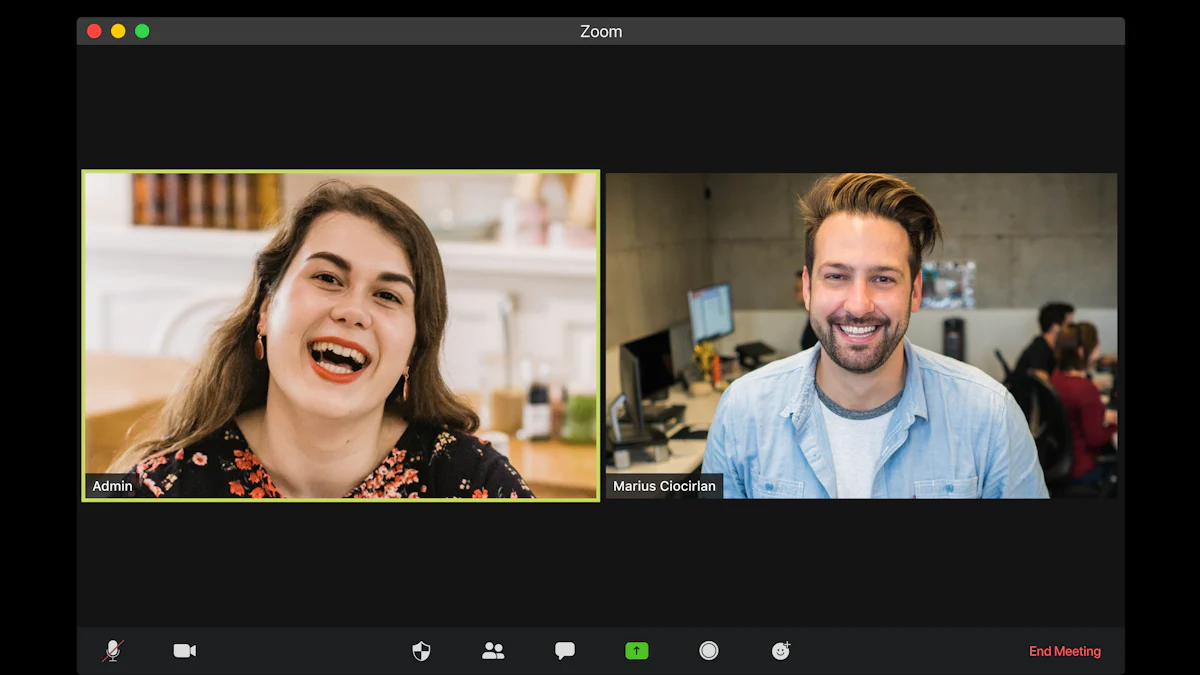How to Prepare for the Apple Phase 2 Virtual Interview in 2025
Try Aihirely for
Smarter Interview Prep
Experience real-time AI support tailored to your Resume.
Boost your confidence and ace every question with
AI Mock Interview.

Image Source: pexels
Preparing for the Apple Phase 2 virtual interview can feel overwhelming, but with the right approach, you can set yourself up for success. Apple’s interview process is designed to uncover your technical skills, problem-solving abilities, and how well you align with their culture. Strategic preparation is key. Focus on mastering core technical topics, practicing mock interviews, and structuring your responses effectively. Did you know candidates who prepare thoroughly can achieve a 100% success rate? Take the time to understand the format and expectations so you can walk into your interview with confidence.
Key Takeaways
-
Learn the interview format. There will be several sessions about skills and teamwork.
-
Study key technical topics. Practice data structures, algorithms, and system design for coding tasks.
-
Use the STAR method. Answer behavior questions by sharing your experiences and showing Apple’s values.
-
Get your virtual setup ready. Check your tech early and pick a quiet, bright spot to look professional.
-
Stay calm and confident. Imagine doing well and trust your practice to stay relaxed.
Understanding the Apple Phase 2 Virtual Interview
Structure and Format
The Apple Phase 2 virtual interview is a comprehensive process designed to evaluate your technical expertise and cultural fit. It typically spans an entire day and includes multiple back-to-back interviews. Each session lasts between 30 to 60 minutes, giving you ample time to showcase your skills.
Here’s what you can expect:
-
A mix of System Design and Coding Interviews, focusing on your problem-solving abilities.
-
An initial phone screen or virtual interview to assess your basic qualifications.
-
Technical and behavioral rounds to dive deeper into your skills and personality.
The structure ensures Apple gets a holistic view of your capabilities. You’ll need to stay sharp and prepared throughout the day.
Key Expectations from Candidates
Apple sets high standards for candidates during the Phase 2 virtual interview. They’re looking for more than just technical skills. Here’s what they expect:
-
Strong coding abilities, especially in areas like arrays, strings, and algorithms.
-
A solid understanding of data structures and system design principles.
-
Clear communication and problem-solving skills during technical evaluations.
-
Alignment with Apple’s core values, such as innovation and collaboration.
-
The ability to reflect on past experiences and demonstrate interpersonal skills in behavioral interviews.
You’ll need to balance technical expertise with a strong cultural fit. Apple values candidates who can think critically and work well in a team.
Tools and Platforms Used
Apple uses cutting-edge tools to conduct its virtual interviews. You’ll likely interact with platforms like Zoom or Webex for video calls. For coding challenges, expect to use collaborative coding tools such as CodeSignal or CoderPad.
Make sure your setup is ready. Test your internet connection, webcam, and microphone beforehand. Familiarize yourself with the platforms to avoid any last-minute hiccups. A smooth technical setup shows professionalism and helps you focus on the interview itself.
Preparing for the Technical Interview

Image Source: unsplash
Core Topics to Master
Data Structures and Algorithms
To ace the technical portion of the apple phase 2 virtual interview, you need a strong grasp of data structures and algorithms. Focus on these key areas:
-
Arrays and Strings
-
Linked Lists
-
Stacks & Queues
-
Searching & Sorting Algorithms
-
Recursion & Backtracking
-
Trees & Graphs
These topics form the foundation of most coding challenges. Don’t just memorize solutions—understand the underlying concepts. Practice implementing these structures and solving problems that require their use.
System Design
System design is another critical area. Apple often evaluates your ability to design scalable and efficient systems. Start by learning the basics of distributed systems, load balancing, and database sharding. Then, dive into designing real-world applications like chat systems, e-commerce platforms, or video streaming services. Use diagrams to explain your thought process clearly.
Coding Practice and Problem-Solving Strategies
Effective coding practice is all about consistency. Follow these steps to sharpen your skills:
-
Understand the problem. Clarify constraints and edge cases.
-
Plan your approach. Outline your solution before writing code.
-
Implement the solution. Write clean, readable code.
-
Test and debug. Check for edge cases and fix errors.
-
Optimize. Improve time and space complexity if possible.
Use platforms like LeetCode, HackerRank, and AlgoExpert to practice. Simulate interview pressure with timed challenges or mock interviews. Peer practice or professional feedback can also boost your confidence.
Tips for Success in Technical Interviews
-
Communicate your thought process. Explain each step as you solve problems.
-
Don’t hesitate to ask clarifying questions. It shows you’re thorough.
-
Admit when you don’t know something. Honesty is better than guessing.
-
Start with a simple solution before optimizing. It helps you avoid getting stuck.
By mastering these strategies, you’ll feel more prepared and confident during your interview.
Excelling in the Behavioral Interview
Common Behavioral Questions to Expect
Behavioral interviews can feel tricky, but they’re your chance to show who you are beyond your technical skills. Apple wants to see how you’ve handled real-world situations and whether your approach aligns with their values. Here are some common questions you might face:
-
Describe a time when you exceeded expectations of a customer.
-
Tell me about a time you had to deal with a challenging situation.
These questions help Apple understand your passion for their products, your ability to deliver exceptional service, and how you handle tough moments. Think about your past experiences and how they connect to these themes.
Using the STAR Method Effectively
The STAR method is a powerful way to structure your answers. It stands for Situation, Task, Action, and Result. Here’s how you can use it:
-
Practice Your Stories: Prepare a few examples that highlight your skills and experiences.
-
Be Concise: Keep each part of your story short and focused.
-
Tailor Your Answers: Align your examples with Apple’s values and the role you’re applying for.
-
Be Honest: Share genuine experiences where you made an impact.
-
Reflect on Learnings: End your answer by explaining what you learned or how you grew.
For example, if asked about a challenging situation, describe the problem, what you needed to do, the steps you took, and the outcome. This method keeps your answers clear and impactful.
Demonstrating Alignment with Apple’s Values
Apple values innovation, teamwork, and a customer-first mindset. Showcasing these qualities can set you apart.
-
Share examples where you solved problems creatively or introduced new ideas.
-
Highlight times when you worked well with others to achieve a goal.
-
Talk about how you’ve prioritized customer needs in your past roles.
For instance, if you’re asked about exceeding customer expectations, explain how you went above and beyond to deliver a great experience. Apple wants to see that you’re passionate about their mission and ready to contribute to their culture.
By preparing thoughtful answers and connecting them to Apple’s values, you’ll leave a lasting impression during the apple phase 2 virtual interview.
Communication and Confidence Tips for Virtual Interviews

Image Source: unsplash
Explaining Your Thought Process Clearly
Clear communication is a game-changer during the apple phase 2 virtual interview. When solving problems, walk the interviewer through your thought process step by step. Start by summarizing the problem in your own words. This shows you understand the question and gives you a moment to organize your thoughts.
Break your solution into smaller parts. For example, explain why you’re choosing a specific data structure or algorithm. Use phrases like, “I’m considering this approach because…” or “This method works well since…” This keeps the interviewer engaged and helps them follow your logic.
Don’t rush. Take your time to explain each step clearly. If you make a mistake, acknowledge it and correct yourself. Interviewers appreciate honesty and adaptability more than perfection.
Asking Clarifying Questions
Asking questions isn’t a sign of weakness—it’s a sign of thoroughness. If a problem seems unclear, don’t hesitate to ask for clarification. For instance, you might ask, “Are there any constraints I should consider?” or “What edge cases should I account for?”
This not only helps you avoid misunderstandings but also shows the interviewer that you’re detail-oriented. It’s better to ask upfront than to solve the wrong problem. Plus, it creates a collaborative atmosphere, which is something Apple values in its candidates.
Managing Nerves and Staying Professional
Feeling nervous? That’s normal. The key is to manage those nerves so they don’t affect your performance. Here are some tips to help you stay calm and professional:
-
Sit up straight. Good posture conveys confidence and helps you feel in control.
-
Dress professionally. Even though it’s virtual, wearing formal attire can put you in the right mindset.
-
Practice mindful breathing. Take a few deep breaths before the interview to calm your nerves.
-
Visualize success. Picture yourself answering questions confidently and connecting with the interviewer.
These small actions can make a big difference. They help you feel more prepared and project a professional image throughout the interview.
Final Preparation Tips for Success
Practicing with Mock Interviews
Mock interviews are one of the best ways to prepare for the apple phase 2 virtual interview. They help you get comfortable with the format and improve your performance. Here’s how they can make a difference:
-
Practice answering common Apple interview questions, including coding challenges and whiteboarding exercises.
-
Get honest feedback from your mock interviewer to identify areas for improvement.
-
Focus on specific aspects during each session, like problem-solving or communication skills.
Mock interviews also boost your confidence. They let you rehearse your answers and refine your presentation style. Plus, you’ll get constructive feedback to sharpen your skills. Use these sessions to evaluate your practical knowledge, especially in programming languages or system design.
You can practice with a friend, mentor, or even a professional coach. The more you practice, the more prepared you’ll feel on the big day.
Preparing Your Virtual Setup
Your virtual setup plays a huge role in making a great impression. A smooth technical experience shows you’re professional and ready. Here’s what to keep in mind:
-
Test your setup in advance. Check your internet connection, webcam, and microphone to avoid any glitches.
-
Dress in smart casual attire. Even though it’s virtual, looking polished helps you feel confident.
-
Arrive early. Log in at least 10 minutes before the interview starts to ensure everything is ready.
Choose a quiet, well-lit space for the interview. Make sure your background is clean and free of distractions. A little preparation goes a long way in creating a professional environment.
Staying Positive and Confident
Your mindset can make or break your interview. Staying positive and confident helps you perform at your best. Here are some tips to keep your nerves in check:
-
Visualize success. Picture yourself answering questions with ease and connecting with the interviewer.
-
Focus on what you can control. Prepare thoroughly and trust your abilities.
-
Take deep breaths. This simple technique can calm your nerves and help you stay focused.
Remember, the interview is as much about your attitude as it is about your skills. A positive mindset shows you’re ready to tackle challenges and contribute to Apple’s mission.
Preparing for the apple phase 2 virtual interview takes effort, but it’s worth it. Confidence comes from preparation, so focus on building your skills and practicing consistently. Brush up on the fundamentals like data structures, algorithms, and system design. Practice coding on platforms like LeetCode and rehearse your answers to behavioral questions using the STAR method.
Don’t forget to align your approach with Apple’s values. Show your passion for innovation and teamwork. Mock interviews and feedback will help you refine your performance. With the right mindset and preparation, you’ll be ready to impress and succeed.
FAQ
What should I wear for the Apple Phase 2 virtual interview?
Apple values professionalism. Wear business casual or formal attire to make a great impression. Even though it’s virtual, dressing appropriately shows you’re serious about the opportunity. A neat appearance boosts your confidence too!
How much time should I spend preparing for the interview?
Preparation time varies, but aim for at least 2-3 weeks. Dedicate daily time to coding practice, system design, and behavioral questions. Consistency matters more than cramming. Use mock interviews to refine your skills and track your progress.
Can I use notes during the interview?
Yes, you can keep brief notes nearby. Use them for quick reference, like key formulas or system design principles. Don’t rely on them too much, though. Focus on demonstrating your understanding and problem-solving skills.
Tip: Practice solving problems without notes to build confidence for the real interview.
What if I don’t know the answer to a question?
It’s okay not to know everything. Be honest and explain how you’d approach finding the solution. Interviewers value your problem-solving process more than a perfect answer. Stay calm and show your willingness to learn.
How do I handle technical issues during the virtual interview?
If something goes wrong, let the interviewer know immediately. Stay calm and try to resolve the issue quickly. Test your setup beforehand to minimize risks. A backup device or internet connection can save the day!
Note: Technical hiccups happen. How you handle them shows your adaptability and professionalism.
